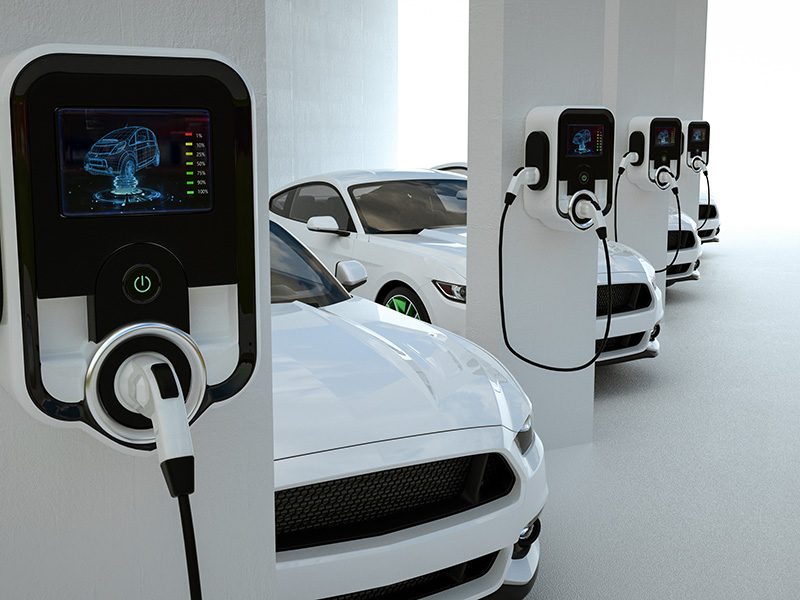As electric vehicles (EVs) become more popular, the challenge for car manufacturers is to remove drivers’ “range anxiety” while making the car more affordable. This translates into making the battery packs lower cost with higher energy densities. Every single watt-hour stored and retrieved from the cells is critical to extend the driving range.
Having accurate measurements of voltage, temperature and current is paramount to achieving the highest estimation of the state of charge or state of health of every cell in the system.

The main function of a battery management system (BMS) is to monitor cell voltages, pack voltages and pack current. Figure 1a shows a battery pack in the green box with multiple cells stacked. The cell supervisor unit includes the cell monitors checking the voltage and temperature of the cells.
Benefits of intelligent BJB
Intelligent junction box with voltage and current synchronization in EVs
As electric vehicles (EVs) become more popular, the challenge for car manufacturers is to remove drivers’ “range anxiety” while making the car more affordable. This translates into making the battery packs lower cost with higher energy densities. Every single watt-hour stored and retrieved from the cells is critical to extend the driving range.
Having accurate measurements of voltage, temperature and current is paramount to achieving the highest estimation of the state of charge or state of health of every cell in the system.
The main function of a battery management system (BMS) is to monitor cell voltages, pack voltages and pack current. Figure 1a shows a battery pack in the green box with multiple cells stacked. The cell supervisor unit includes the cell monitors checking the voltage and temperature of the cells.
Benefits of intelligent BJB:
Eliminates wires and cabling harnesses.
Improves voltage and current measurements with lower noise.
Simplifies hardware and software development. Because Texas Instruments (TI) pack monitor and cell monitors come from the same family of devices, their architecture and register maps are all very similar.
Enables system manufacturers to synchronize pack voltage and current measurements. Small synchronization delays enhance state-of-charge estimations.
Voltage, temperature and current measurement
Voltage: The voltage is measured using divided-down resistor strings. These measurements check whether the electronic switches are open or closed.
Temperature: The temperature measurements monitor the temperature of the shunt resistor so that the MCU can apply compensation, as well as the temperature of the contactors to make sure that they are not stressed
Current: The current measurements are based on:
A shunt resistor. Because the currents in an EV can go up to thousands of amperes, these shunt resistors are extremely small – in the range of 25 µOhms to 50 µOhms.
A hall-effect sensor. Its dynamic range is typically limited, thus, sometimes there are multiple sensors in the system to measure the entire range. Hall-effect sensors are inherently susceptible to electromagnetic interference. You can place these sensors anywhere in the system, however, and they are inherently providing an isolated measurement.
Voltage and current synchronization
Voltage and current synchronization is the time delay that exists to sample the voltage and current between the pack monitor and cell monitor. These measurements are mainly used for calculating state of charge and state of health through electro-impedance spectroscopy. Calculating the impedance of the cell by measuring the voltage, current and power across the cell enables the BMS to monitor the instantaneous power of the car.
The cell voltage, pack voltage and pack current have to be time-synchronized to provide the most accurate power and impedance estimations. Taking samples within a certain time interval is called the synchronization interval. The smaller the synchronization interval, the more accurate the power estimate or the impedance estimate. The error of nonsynchronized data is proportional. The more accurate the state-of-charge estimation, the more mileage drivers get.
Synchronization requirements
Next-generation BMSs will require synchronized voltage and current measurements in less than 1 ms, but there are the challenges in meeting this requirement:
All cell monitors and pack monitors have different clock sources; therefore, the samples acquired are not inherently synchronized.
Each cell monitor could measure from six to 18 cells; each cell’s data is 16 bits long. There's a lot of data that needs transmitting over a daisy-chain interface, which could consume the timing budget allowed for voltage and current synchronization.
Any filter such as a voltage filter or a current filter influences the signal path, contributing to voltage and current synchronization delays.
TI’s BQ79616-Q1, BQ79614-Q1 and BQ79612-Q1 battery monitors can maintain a time relationship by issuing an ADC start command to the cell monitor and the pack monitor. These TI battery monitors also support delayed ADC sampling to compensate for the propagation delay when transmitting the ADC start command down the daisy-chain interface.
Conclusion
The massive electrification efforts happening in the automotive industry are driving the need to reduce the complexity of BMSs by adding electronics in the junction box, while enhancing system safety. A pack monitor can locally measure the voltages before and after the relays, the current through the battery pack. The accuracy improvements in voltage and current measurements will directly result in optimal utilization of a battery.
Effective voltage and current synchronization enables precise state-of-health, state-of-charge and electrical impedance spectroscopy calculations that will result in optimal utilization of the battery to extend its life, as well as increasing driving ranges.
Post time: Apr-26-2022

